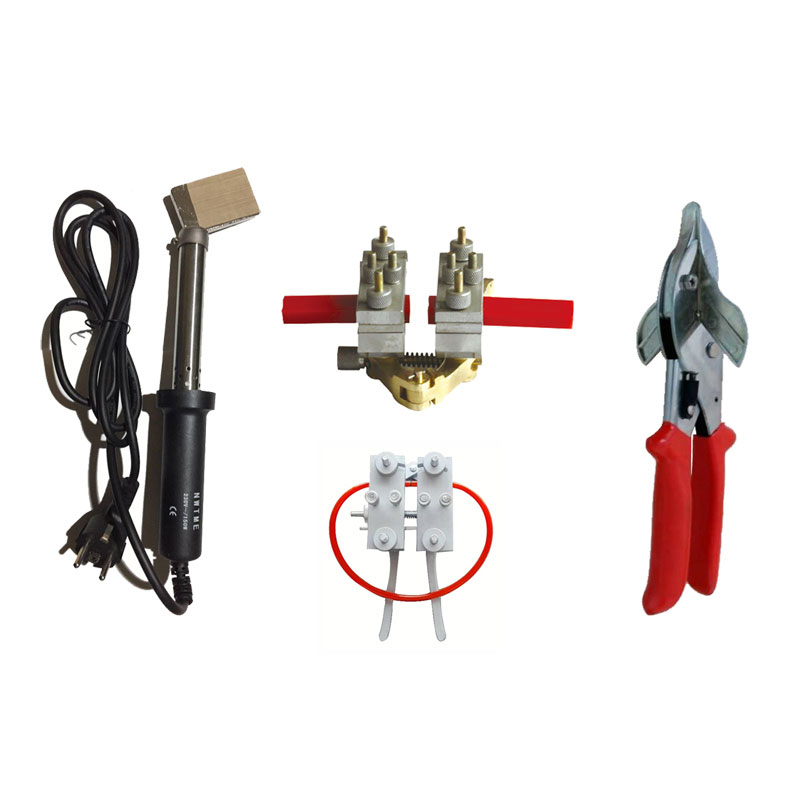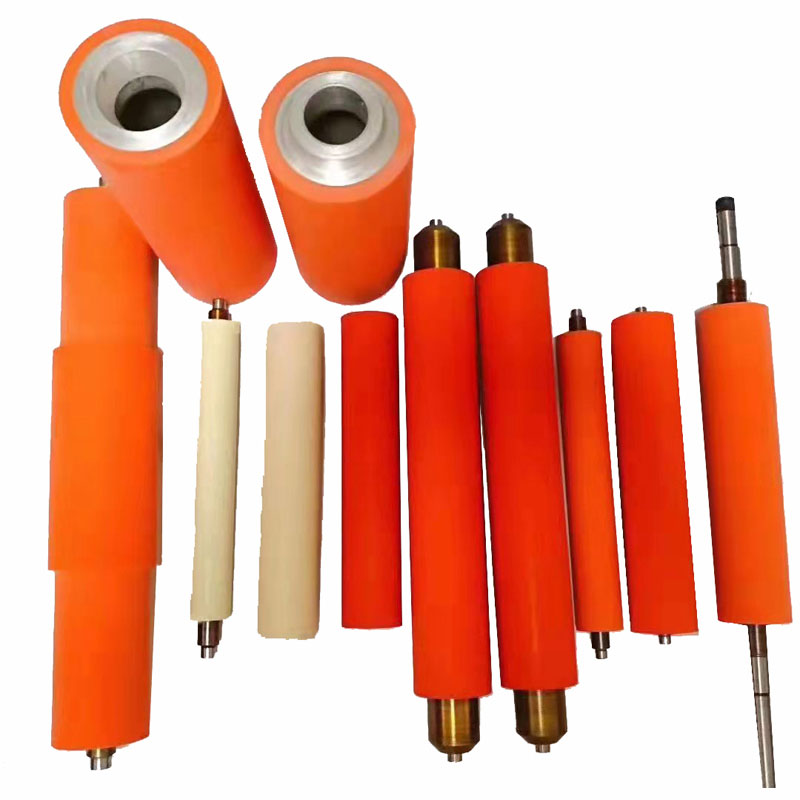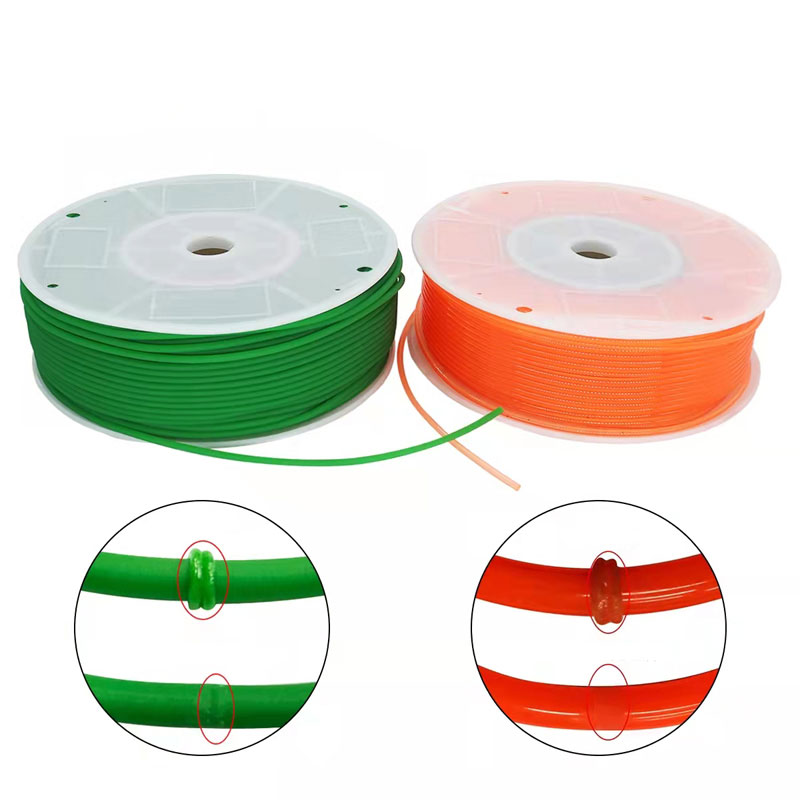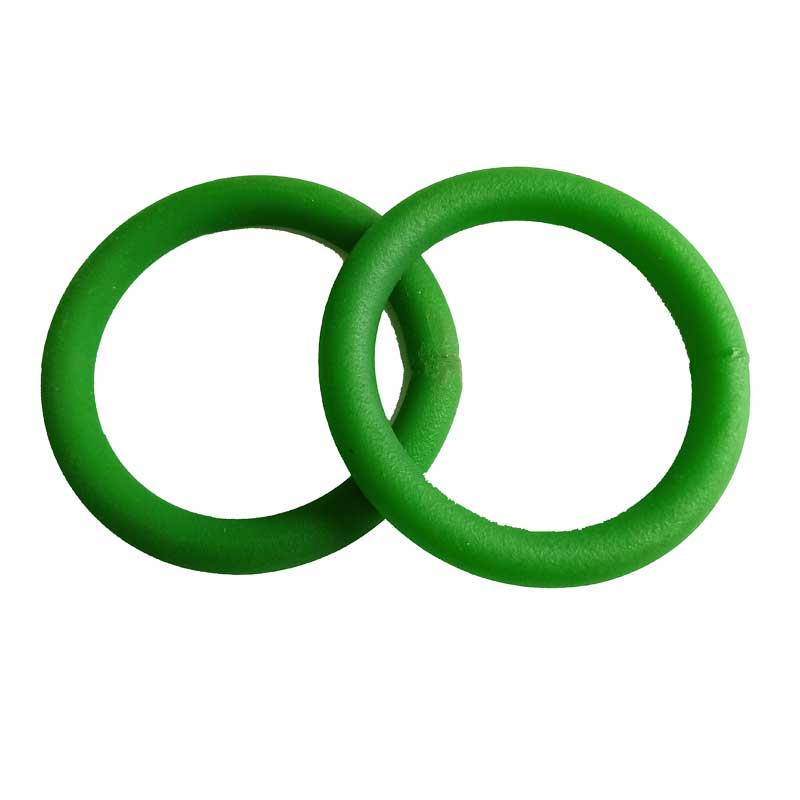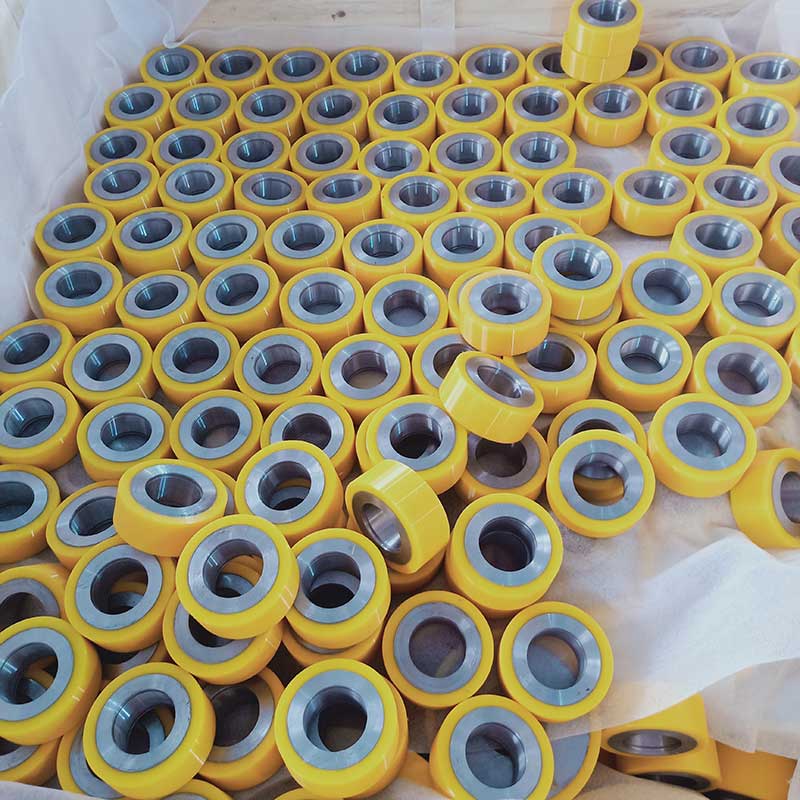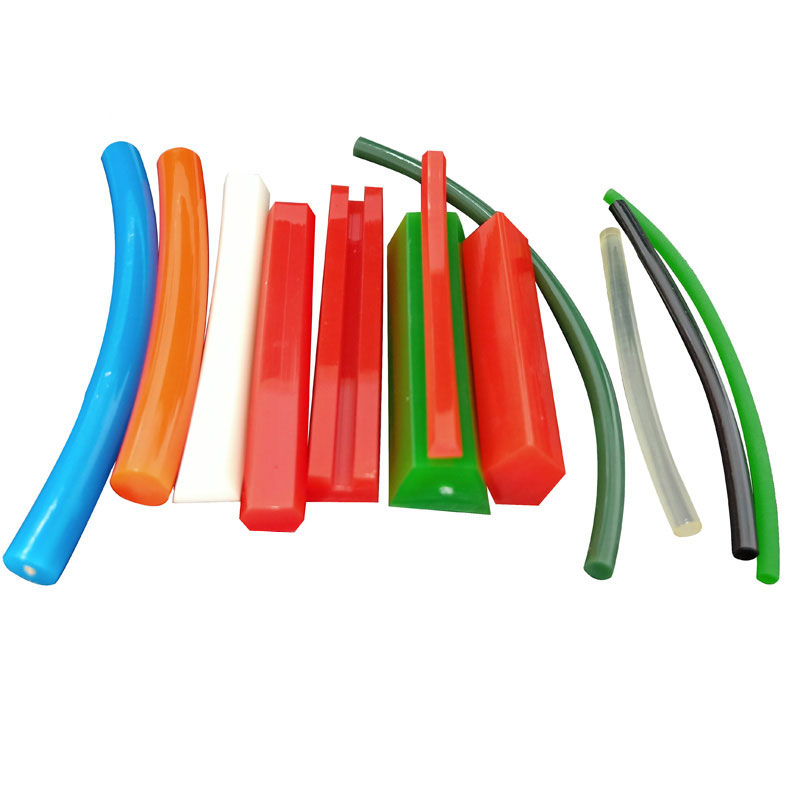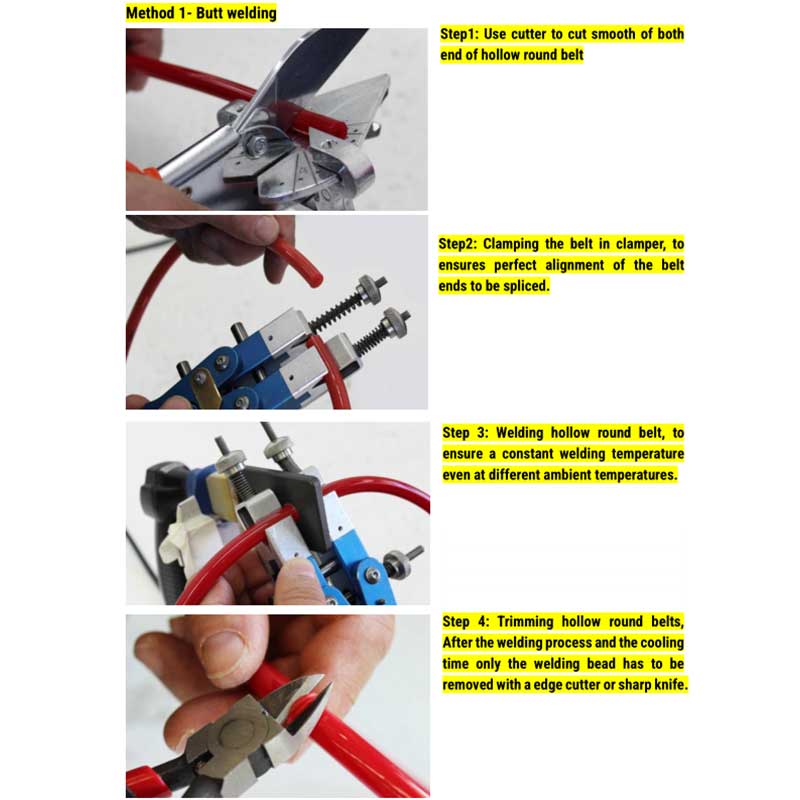The main factors affecting the performance of polyurethane rubber rollers:
1. The effect of polyol molecular weight on the performance of rubber rollers;
Whether it is polyester or polyether, the molecular weight is an important factor affecting the performance of the rubber roller. The molecular weight determines the density of the characteristic groups in the polyurethane elastomer. Generally speaking, as the molecular weight of polyester polyurethane rubber increases, the number of methylene groups and ester groups increases, the force between molecules and “hydrogen bond” crosslinking increase, and the crystallization of chain segments also increases, so the elasticity It is possible to improve the physical properties of the body. As the molecular weight of polyether increases, the number of ether bonds will also increase, which improves the flexibility of the elastomer, so the tensile strength and modulus of the elastomer will decrease, and the relative elongation and rebound may decrease. improved. But regardless of the molecular weight of polyglycol, its tensile strength decreases sharply with the increase of temperature. This is mainly due to the secondary cross-linking bonds formed by the “hydrogen bonds” between the elastomers, which are very sensitive to temperature. At high temperature, it is advisable to control the molecular weight of polyols between 1100 and 2200 for primary crossing.
At the same time, as the molecular weight of the polyol increases, the wear resistance of the elastomer also increases. The greater the OH value in polyurethane elastomers, the greater its wear and the decrease in wear resistance, which is caused by the decrease in flexibility and elasticity. Therefore, in practical applications, an appropriate index value should be selected according to requirements to achieve the best wear resistance. Linkage will become an important factor for the stability of elastomer performance.
2. The influence of vulcanizing agent;
The reason why polyurethane rubber has excellent wear resistance and other excellent properties is that it is regularly arranged into rigid chain segments by groups such as carbamate groups, biuret groups, and allophanate groups. It has a regular network structure. However, due to the difference in the type and chemical equivalent of the vulcanizing agent, it will have different effects on the performance of the elastomer. Different types of vulcanizing agents will produce different polar groups during the reaction, and changing the equivalent ratio NHz will affect the elastomer characteristic group. The variation of the crosslink density plays a major role.
The equivalent ratio of the amine curing agent to the isocyanate in the prepolymer has a significant impact on the physical properties of the rubber compound, especially when the MOCA is excessive, the physical properties of the rubber compound will decrease sharply. As the equivalent of MOCA decreases, the residual isocyanate group will further react with the urea group and carbamate group in the main chain, the primary cross-linking bond of biuret will increase, and the hydrogen bond between molecules will decrease. Tensile strength, elongation and tear strength decrease, while modulus increases. However, when the MOCA equivalent is greater than 1, biuret crosslinking is difficult to form; excess MOCA only acts as a plasticizer in the rubber compound, weakening the hydrogen bond of the elastomer, resulting in a decrease in physical properties. In order to maintain a good balance between the primary cross-linking bonds of biuret and the secondary cross-linking bonds formed by intermolecular hydrogen bonds, the MOCA equivalent should generally be controlled at 0.85-o. 95 to ensure the best performance of the rubber roller. The change of MOCA equivalent has little effect on the hardness of the compound and the elasticity of the elastomer.
From the synthetic chemistry of polyurethane, it can be known that in the elastomer, urea groups and urethane groups should be formed as much as possible, and biuret and allophanate groups should be generated as little as possible, which will improve the heat resistance of the elastomer. is beneficial. Because substituted urea and urethane groups are much more thermally stable than biurets and allophanates C4J:
If diamines with equivalent chemical equivalents are used, urea groups can be formed, but biurets are rarely formed, but the elastomer lacks a certain cross-linking structure, and the overall performance will be affected. For this reason, we have used diamines and low-molecular-weight diols together to make NHz + OHNGO = 1 or close to 1, so that the elastomer has both heat-resistant urea groups and carbamate groups, and It can ensure that the vulcanized limb has sufficient cross-linking structure. Practice has proved that the advantages of mixed vulcanization of MOCA and low-molecular-weight diols are that the reactivity of the compound vulcanized by MOCA is reduced, and the process conditions of casting molding are improved, making it an attractive vulcanization system for castable polyurethane elastomers. In particular, it can improve the comprehensive performance of coated soft rubber rollers that are in short supply for colored organic coated steel sheets in the iron and steel industry.
3. Effect of mixing temperature;
Increasing the mixing temperature of the prepolymer and the vulcanizing agent will obviously shorten the life and solidification time of the rubber material in the kettle, which will bring difficulties to the casting and molding of the rubber roller. When the mixing temperature is higher than 120°C, the physical properties of the rubber compound will decrease. The color of the rubber roller becomes darker, especially when the mixing temperature exceeds 140°C, the performance decrease is more obvious. If the mixing temperature is too low, although it is beneficial to prolong the life and solidification time of the rubber in the kettle, and improve the performance of the roller rubber. However, the liquid rubber has a high viscosity and is not easy to mix evenly. Sometimes white flakes can be found in the glue layer, and bubbles are easy to occur. Generally, the temperature is 75-85 °C, and the maximum is not more than 90 vl00 °C. In short, the mixing temperature and the curing speed of the rubber material and the flow speed are a pair of contradictions. During operation, factors such as the rubber material with different hardness requirements and the size of the rubber roller mold must be considered comprehensively to produce polyurethane rubber cast rubber rollers with a high pass rate.
4. Influence of pouring molding process;
The impact of casting molding process on the quality of rubber rollers is quite obvious, especially on the appearance of rubber rollers. Based on experience, here are some issues that should be paid attention to.
(1) It is very important to keep the rubber roller mold and roller core at an appropriate temperature before pouring. A higher mold temperature will result in a lower surface hardness of the rubber roller; the surface of the rubber roller is prone to peeling and other phenomena, and the mold temperature is too low, which often causes plastic deformation and bonding problems, and also prolongs the demoulding cycle. At the same time, the surface of the rubber roller is also prone to air bubbles or difficult demoulding, which will also slow down the flow rate of the liquid rubber material into the mold, reduce the temperature of the material, and produce irregular shadow lines on the surface of the rubber layer, which reduces the bonding force between the rubber layer and the roller core. .
(2) The mold should maintain an appropriate inclination angle during casting to ensure that the injection mold does not generate turbulent flow, and prevent mechanical bubbles from being impacted by the rubber material, which will affect the internal quality of the rubber roller.
(3) Regardless of whether the rubber is injected on the center surface or the side of the mold, the position of the injected material should be relatively fixed to prevent the rubber from overlapping and accompanied by entrained air, resulting in air bubbles.
(4) When pouring and molding, the mold cavity should be filled at one time. If the continuous and uniform flow can be maintained, the uniform performance of the rubber roller will be better guaranteed.
(5) After pouring and molding, the mold should be moved carefully at an appropriate time, and the mold should not be moved in a “loose” state of the rubber material to prevent undesirable compounding and cracking.
5. Effect of mechanical finishing
Practice has proved that the rubber rollers after casting and vulcanization must be subjected to mechanical finishing such as surface turning and polishing to ensure that the surface of the cast polyurethane rubber rollers has a relatively high degree of smoothness and flatness, and to ensure the concentricity of the surface of the rubber rollers and the roller shaft. , in order to obtain the best use effect and longer service life. If you do not pay attention to the mechanical finishing of the surface of the rubber roller, no matter how well the previous elastomer synthesis and casting molding process is controlled, satisfactory results cannot be obtained.
6. Effect of Adhesive Layer Thickness
Casting polyurethane rubber is a kind of strong polar synthetic rubber. It has large hysteresis internal heat generation, small heat transfer coefficient, and fast temperature rise in the rubber layer. The covering layer of the rubber roller working under high speed and high pressure must have the minimum thickness and the maximum hardness allowed. At the same time, the internal cooling of the rubber roller can also dissipate the generated heat of the rubber layer of the roller to prolong the service life of the rubber roller. Practical application also proves that the proper thinning of the covering layer can significantly improve the service life of the chemical fiber drawing rubber rollers and other types of rollers with relatively harsh service conditions to about three months (generally only about 40 days). Usually the glue layer is most suitable for 10-15mm.
7. The influence of “aging”
The synthesis of castable polyurethane rubber is a bulk polymerization reaction of gradual addition, and its structure is relatively complicated. This kind of rubber is very different from each other in molecular structure, intermolecular force, molecular aggregation state and microphase separation, etc., and it will inevitably show a variety of physical and chemical properties. In addition to reasonable structural design of castable polyurethane elastomers In addition to the synthesis process, formula and proper casting molding process, a large number of application practices have also proved that in order to obtain the longest service life of castable polyurethane rubber rollers and other products, the produced rubber rollers must be stored indoors at room temperature for three months Reuse of the above, as far as possible to make the polymer polyurethane elastomer itself have sufficient tolerance for compounding and self-crosslinking to obtain the best physical properties, this is the time effect that people often fail to pay attention to (referred to as “aging” “). We found that the service life of the produced rubber rollers that are used immediately and those that are stored for a period of time are significantly different, and the latter is obviously better than the former. Therefore, the important influence of “aging” on the performance and service life of cast polyurethane rubber rollers cannot be ignored.
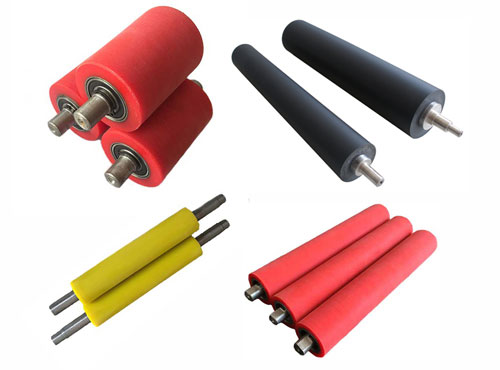
Casting type polyurethane rubber roller is a kind of rubber roller manufactured by casting liquid polyurethane. Compared with ordinary rubber rollers, it has higher mechanical strength (2-3 times that of natural rubber), excellent wear resistance (5-10 times that of natural rubber), outstanding compression resistance, and a wide range of hardness. The surface finish is high, the machining performance is superior, and the adhesion to metal is much higher than that of ordinary rubber, which is more suitable for use under a certain line speed and high pressure.
Casting polyurethane rubber rollers are divided into polyester type, polyether type and polycaprolactone (PCL). Generally speaking, the polyester type is mostly used in low and medium hardness rubber rollers. It has high physical and mechanical properties and high solvent resistance, and is often used in the non-ferrous metal industry. Polyether type is mostly used in high-speed, high-hardness rubber rollers. It has good water resistance, excellent low temperature resistance, and easy control of process performance. It is often used to manufacture drawing rollers, printing rollers, etc. Polycaprolactone type has superior comprehensive properties, low temperature resistance and hydrolysis resistance, and is often used as press rolls and rubber rolls with high requirements.
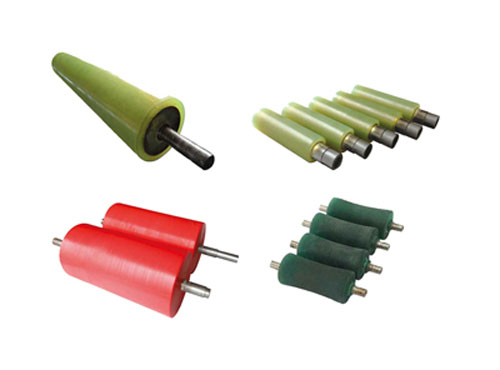
Basic requirements of rubber rollers for polyurethane materials
(1) It must meet the physical and mechanical performance indicators required by various rubber rollers;
(2) It must have good adhesion with the roller core to meet the process requirements of bonding molding;
(3) The hardness of the rubber roller should meet the requirements, and the hardness of the roller surface should be uniform;
(4) No air bubbles, impurities and mechanical damage on the surface.
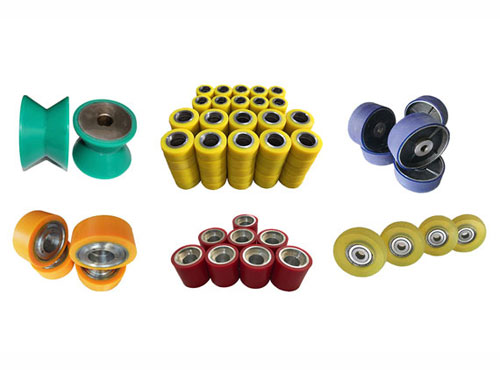
Metal roller core pretreatment
(1) Carefully clean the surface of the roller core to remove oil stains, lubricants and organic substances generated by metal association. As the cleaning solution, common cleaning solvents or trichlorethylene can be used. the
(2) Carefully remove the rust or oxide on the surface of the roller core. Commonly used sandblasting treatment: for carbon steel roller cores, 80-100 mesh alumina abrasives are recommended; for aluminum roller cores, 140-320 mesh abrasives should be used for wet sandblasting treatment. After sandblasting, the surface should be cleaned with a solvent Residual dust is removed. In order to obtain a good bonding effect, the carbon steel roller core should be bonded within 4 hours after sandblasting, and the aluminum roller core can be bonded within 72 hours after sandblasting. the
(3) Carefully apply a suitable adhesive (such as NA-1, chcmlock-218, Thixon422, etc.). Process for 1 hour, then proceed to CPU pouring operation.
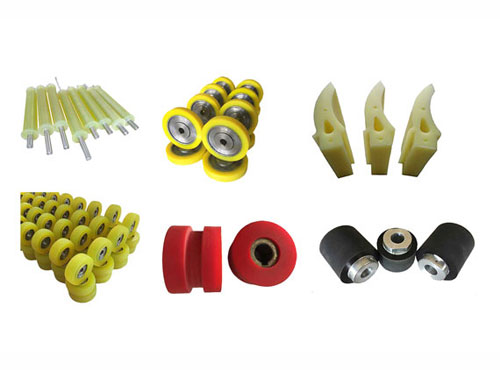
The main technical performance of polyurethane roller
(1) Hardness
(2) Surface requirements – depending on the specific use, some require smooth surface or special processing or treatment.
(3) Medium to high ratio: the difference between the diameter of the center part of the rubber roller and the diameter of the end part. Its function is to compensate for the deflection deformation of the slender rubber rollers during operation, and the medium-to-high ratio of the rubber rollers increases with the length of the rubber rollers.
production process of Polyurethane rollers:
1. Manual pouring or pouring machine pouring – pouring machine is the key equipment in the production of cast polyurethane elastomer (CPU), its main technical requirements are as follows, accurate proportioning, stable measurement, uniform mixing, no bubbles, accurate temperature reliable.
2. Molding vulcanization, demoulding vulcanization.
3. Surface reprocessing, turning or grinding on processing equipment according to requirements.


